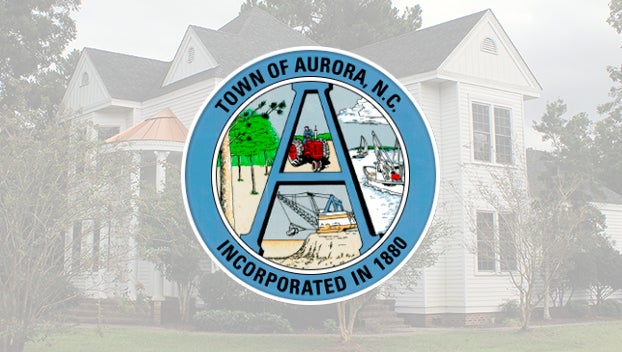Local museum spotlighted around the world
Published 7:18 pm Wednesday, October 28, 2015

AURORA FOSSIL MUSEUM
WORLD STAGE : Aurora Fossil Museum Director Cynthia Crane (pictured righ) was recently interviewed as a result of beachgoers finding Megalodon teeth that had washed up on the North Carolina coast. The interview went viral, gaining the most exposure the museum has ever had.
AURORA FOSSIL MUSEUM
HUMONGOUS: Pictured (left) is a tooth from a Megalodon. The tooth measures 6 ¾ inches, meaning the Megalodon was almost 70 feet in length. The tooth in the picture is one that is being raffled off by the museum during its 23rd annual Aurora Fossil Festival on May 28.
The Aurora Fossil Museum stepped into the international spotlight this weekend.
The international exposure happened after an interview with museum director Cynthia Crane by a local news station went viral, according to Crane.
Crane got word that CNN had asked to use the segment on the newswire, making it readily available for any media network to pick it up, she said.
“We were like, ‘Oh gosh, we’re going national,’” Crane said.
The clip focused on recent news that beachgoers have been finding fossilized Megalodon teeth in North Topsail Beach and Surf City. The fossils have been washing up onshore because a dredging project has disturbed the underlying shelf offshore. Since, the currents and recent storm systems have caused some of these fossils to wash up, Crane said.
In the clip, Crane spoke about Megalodon and the teeth that have been washing up on the North Carolina coast. Crane was contacted for comment because the museum is the only fossil museum in the area and because Crane, a paleontologist, could give information about the recent findings, she said.
Crane said the Megalodon was a giant predator, a distant relative of a great white shark. It patrolled the ancient seaways through the mid-Miocene to the mid-Pliocene period, which would mean the animal existed around 3-15 million years ago, and could grow to be anywhere between 50-80 feet long and weigh around 70-100 tons, according to Crane.
Crane said the publicity is on the largest scale the museum has ever received and positions the museum to potentially receive more visitors and funding for its nonprofit status.
Crane said her interview was further picked up by the Australian Broadcasting Company (ABC), Fox News, media outlets in the United Kingdom, Time, The Weather Channel and many others.
The museum has also been featured heavily on Facebook, and on Neil Patrick Harris’ show, “Best Time Ever,” the recent discovery of Megalodon teeth on North Carolina beaches was used as a trivia question, according to Crane.
“I think with what’s happened, we’re hoping that it will renew interest in the museum and with the people that don’t really know it exists,” Crane said. “Hopefully, we’ll get more traffic and visitors and more interest in paleontology and the paleontological history of North Carolina. It’s amazing how much a one-minute video can accomplish. Hopefully, we’ll get some payback on it for the museum. We’re hoping it will build on all of that for us and for the people in this area and bring a renewed pride in this museum and where they’re from. We want to share it in as many ways as we can.”
For more information, visit https://www.facebook.com/Aurora-Fossil-Museum-344894278856425. Aurora Fossil Museum is located at 400 Main St., Aurora.




